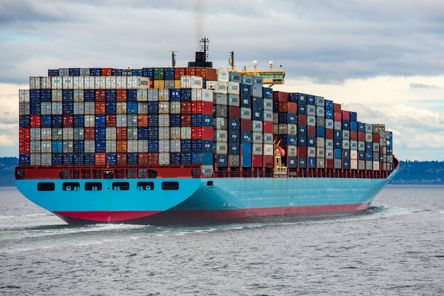Third-party logistics (3PL) fulfillment refers to the outsourcing of order fulfillment and logistics operations to a specialized company. A 3PL provider manages warehousing and order fulfillment on behalf of another company. The rise of ecommerce has led to increasing demand for 3PL services as merchants seek to efficiently handle growing order volumes.
WHAT DOES A 3PL FULFILLMENT PROVIDER DO?
A 3PL fulfillment provider manages a wide range of critical supply chain operations on behalf of client companies. Key services 3PLs handle include warehousing and inventory management, receiving and inspecting incoming inventory, stocking items, optimizing warehouse space, and managing overall inventory levels. When customer orders come in, the 3PL handles order processing and management, picking and packing orders accurately, obtaining discounted shipping rates with carriers, inserting any needed marketing materials, and shipping the completed orders.
The 3PL may also provide customer service support related to orders and handle reverse logistics services such as returns, repairs, refunds, and product liquidations. In addition, they integrate with client ecommerce platforms, ERP systems, and other technologies to enable smooth data exchange and order handoffs. By outsourcing these critical functions, clients can stay focused on their core business strengths.
BENEFITS OF 3PL FULFILLMENT
Outsourcing fulfillment and logistics operations to a 3PL provider has become a very popular strategy for modern retailers and brands. By leveraging the expertise and infrastructure of 3PL specialists, companies can focus resources on their core competencies and scale rapidly. Major advantages gained by partnering with a 3PL fulfillment provider include:
Scalability - 3PLs make it easier to scale fulfillment operations up or down to match changes in order volume. Clients avoid capital costs associated with expanding warehouses and labor.
Operational Efficiency - By consolidating inventory into fewer, larger warehouses, 3PLs can achieve increased productivity and lower fulfillment costs per order. Their scale also provides negotiating leverage with carriers.
Technology & Automation - 3PLs provide access to advanced warehouse management systems (WMS), transportation management systems (TMS), barcode scanning, robotic picking, and other technologies that minimize labor costs.
Flexibility & Specialization - 3PLs offer extensive experience in specific industries and products that allows them to adapt processes to client requirements.
Cost Savings - Outsourcing to 3PLs converts fixed costs into a variable expense model. Minimum commitments provide predictable fulfillment budgets.
Improved Customer Service - With fulfillment experts managing the operation, 3PLs can enhance order accuracy, reduce damage, and improve the overall customer experience.
Faster Time to Market - Startups and smaller merchants can launch faster by leveraging an established 3PL versus building in-house fulfillment capabilities.
For most product companies, fulfillment is not a core competency. By outsourcing these operations to specialists, clients can focus resources on sales, marketing, and product development.
TYPES OF 3PL FULFILLMENT SERVICES
3PL providers offer a range of order fulfillment solutions tailored to different business models and requirements:
Ecommerce/Direct-to-Consumer (D2C) Fulfillment - For online retailers, 3PLs provide pick, pack, and ship services to fulfill direct orders from end consumers. D2C-focused options include B2C parcel shipping, returns management, and branded packaging.
Retail/Wholesale Distribution - Distributing pallets and cases of products to retail stores or distribution centers is a specialty of many 3PLs. They provide compliant labels, advanced shipping notices (ASNs), and other retail requirements.
Business-to-Business (B2B) Fulfillment - For heavier, bulkier products sold business-to-business, 3PLs support LTL/FTL freight, trade show distribution, and white glove installation services.
Omnichannel Fulfillment - Retailers adopting omnichannel strategies need unified inventory and order orchestration across ecommerce, brick-and-mortar, and in-store pickup. 3PLs provide omnichannel technology and operations.
Dropshipping - Online sellers utilizing a dropshipping model rely on 3PLs to fulfill orders directly to their customers. The 3PL handles single unit picking and shipping for dropshippers.
Crowdshipping - Also called on-demand delivery, crowdshipping 3PLs leverage networks of independent couriers for same-day B2C delivery in select metro areas.
Value-added Services (VAS) - Services such as kitting & assembly, product customization, engraving, gift wrapping, and special packaging that add value for customers.
The range of 3PL services ensures flexible options for different fulfillment needs - from high-volume ecommerce order processing to complex B2B distribution programs.
KEY CONSIDERATIONS WHEN SELECTING A 3PL
Selecting the optimal 3PL partner is critical for successfully outsourcing fulfillment, so brands should carefully evaluate several key factors. To start, choose a 3PL operating warehouse in strategic proximity to your target markets and customer base. This geographic positioning enables rapid, cost-efficient delivery. Also confirm the partner has sufficient warehouse capacity, throughput, and bandwidth to smoothly handle current order volumes, with ample room to scale up as volumes grow. Given persistent industry labor shortages, examine their staffing, training, and retention capabilities, including any reliance on staffing agencies to supplement the workforce.
Research which advanced WMS, TMS, automation technologies, and other innovations the 3PL has already invested in or has planned on their technology roadmap. Cutting-edge solutions are essential for fast, accurate fulfillment nowadays. Consider if the provider can offer end-to-end, integrated services both now and into the future as your needs evolve. Look for proven expertise and process engineering specifically suited to your vertical and product types. Clearly delineate if the 3PL will handle customer support tasks versus your own company. Ensure there are adequate resourcing levels. Also assess the inventory, order, and performance reporting they can supply to provide supply chain visibility. Finally, scrutinize proposed contract terms, pricing models, and service level agreements. Taking ample time to thoroughly evaluate multiple 3PLs against your current and future fulfillment requirements lays the critical foundation for a scalable, effective partnership.
3 KEY TRENDS SHAPING THE 3PL INDUSTRY
The 3PL industry continues to evolve in response to broader supply chain and technology shifts. Three major trends influencing 3PLs include:
ECOMMERCE GROWTH
The continuous rapid growth of ecommerce has massive implications for 3PL providers. As online sales volumes grow exponentially year-over-year, 3PLs must invest heavily to handle the spike in DTC orders across industries. Important focus areas include building out parcel shipping capabilities, automating warehouses to enable high volume order processing, and developing returns management processes to handle the influx of returns stemming from ecommerce purchases.
LABOR CHALLENGES
Persistent warehouse labor shortages have forced 3PLs to get creative with staffing solutions. This includes partnering with specialized staffing agencies to provide access to contingent workers. 3PLs are also increasing hourly wages and benefits packages to attract and retain talent in competitive labor markets. Additionally, deploying collaborative robots and other advanced automation assists with tasks while requiring less total staff. Managing labor issues is imperative for 3PLs to continue meeting service commitments.
CONSUMER DEMAND FOR SPEED
As customers increasingly expect faster, near instantaneous delivery, 3PLs must optimize their distribution networks and capabilities. Important initiatives include strategically placing inventory stock to be closer to key markets, expanding same-day delivery options through brick-and-mortar retail stores, leveraging crowdsourced couriers for same-day local delivery, and ensuring seamless connectivity with ecommerce platforms for fast order handoffs. Meeting the challenge of accelerating delivery speed is now table stakes for 3PLs.
Leading 3PLs continue investing heavily to meet evolving customer expectations and adopt the latest technologies to improve operations. These trends are reshaping modern fulfillment.
THE ROLE OF TECHNOLOGY IN 3PL OPERATIONS
Implementing advanced technologies is crucial for third-party logistics providers to drive greater efficiency, speed, and accuracy as they scale up operations. WMS directs all fulfillment center activities from receiving inventory to shipping orders, using features like directed put-away, batch picking, and labor tracking to optimize workflows. Warehouse control systems (WCS) integrate critical automation technologies like automated storage and retrieval systems, conveyors, and sorters, optimizing equipment control, and monitoring to boost throughput.
Other key technologies adopted by 3PLs include warehouse execution systems for real-time worker instructions, TMS for optimizing shipments, order management systems to orchestrate omnichannel order lifecycles, and labor management systems for planning and productivity. Robust mobile technology enhances worker productivity for scanning and inventory management tasks. Hands-free voice technology improves speed, accuracy, and safety for workers, and automated material handling technologies like conveyors and pick-to-light enable streamlined, hands-free order processing and reduced reliance on manual labor. These sophisticated software and automation solutions provide modern 3PLs with the advanced capabilities and scalability needed to expertly manage today's complex, high-volume fulfillment centers.
BEST PRACTICES FOR MANAGING 3PL RELATIONSHIPS
Best practices for managing 3PL relationships include detailed onboarding processes, establishing clear governance procedures, optimizing workflows through collaboration, tightly integrating related systems, and maintaining open communication channels for quickly resolving any issues. Following these best practices sets up the 3PL relationship for sustained success:
Detailed Onboarding - Have the 3PL shadow current processes and systems to document all details early. Thoroughly review fulfillment volumes, workflows and requirements together.
Governance Model - Establish regular meetings to review key metrics, issues, and service levels. Update onboarding documentation. Discuss improvement opportunities and new services.
Open Communication - Maintain active, open communication at multiple levels - executive, operations, and IT. Quickly resolve any problems through established escalation procedures.
Align Priorities - Review strategic priorities together and communicate upcoming business initiatives that may impact fulfillment. Add/adjust 3PL resources accordingly.
Process Optimization - Leverage 3PL expertise to reengineer and streamline processes for greater efficiency. Regularly assess new automation to incorporate.
Performance Management - Track and analyze 3PL performance against KPIs. Build a corrective action plan for any persistent issues to drive continuous improvement.
Contingency Planning - Document risk management, disaster recovery, and business continuity plans. Practice scenarios and assess potential supply chain disruptions.
Technology Integration - Tightly integrate related systems for order orchestration. Use EDI and API integration for real-time data exchange. Maintain alignment as systems evolve.
Account Governance - Establish an executive governance committee to maintain oversight of the relationship. Review successes, areas for improvement, and strategies.
Managing 3PL partnerships as true collaborations ensures maximum value over the long-term. Both parties remain actively engaged in optimizing operations.
THE FUTURE OF 3PL FULFILLMENT
The demand for outsourced fulfillment services will continue expanding as retail sales migrate online and customer delivery expectations accelerate. This growth will drive additional 3PL capabilities and innovation.
The 3PL industry will continue evolving and innovating in the coming years as demand for outsourced fulfillment services keeps expanding. The ongoing migration of retail sales online combined with customer expectations for ever-faster deliveries will fuel strong industry growth. To meet these increasing demands, leading 3PLs will make hyper-automated, robot-centric warehouses mainstream. Tasks like picking, packing, sorting and more will progressively shift from human to automated machines, enabling human workers to focus more on solving exceptions and issues that require problem-solving skills. Along with automation, sustainability practices including energy conservation, renewable energy use, and waste reduction will become standard expectations for responsible supply chain management.
Additionally, big data analytics and machine learning will allow 3PLs to optimize planning and execution using predictive models for demand forecasting, ideal inventory placement, projected delivery patterns, and more. Prescriptive analytics will even recommend the next best actions to take based on this data analysis. Supply chain visibility will improve for customers as connected sensors on inventory, equipment, and vehicles provide real-time tracking data, fed into control tower systems for total visibility. Simulation and network modeling will further refine capabilities, enabling more precise order promising and leaner inventory buffers. As the industry grows, large 3PLs will continue expanding their national and global footprints through mergers and acquisitions. At the same time, niche players will emerge to serve the needs of focused customer segments and specialized services. Autonomous vehicles and drones will also begin moving loads within warehouses, across yards, and on predictable long-haul lanes.
Through these ongoing innovations, 3PL providers will cement their absolutely critical role in enabling omnichannel commerce and satisfying customer delivery demands now and well into the future.
Recap
Outsourcing fulfillment and logistics operations to a 3PL - provider has become imperative for modern retailers. As order volumes grow rapidly, 3PLs provide critical capabilities and economies of scale that enable brands to meet customer expectations for fast, low-cost delivery. By leveraging experienced specialists, retailers can focus on their core business and outsource complex supply chain functions.
Evaluating capabilities, locations, technology, experience, and specialized services ensures brands choose the optimal 3PL partner for their needs. Managing these partnerships as strategic collaborations ensures long-term success. Ongoing optimization, integration, and planning prepares brands to excel in the competitive omnichannel marketplace. With the massive growth projected in ecommerce, innovative 3PL fulfillment solutions will only increase in importance and strategic impact.





